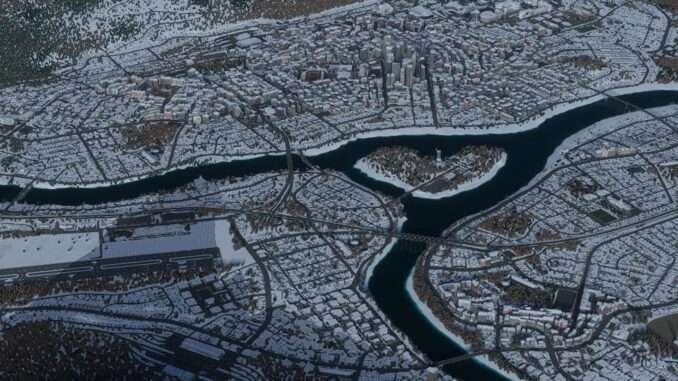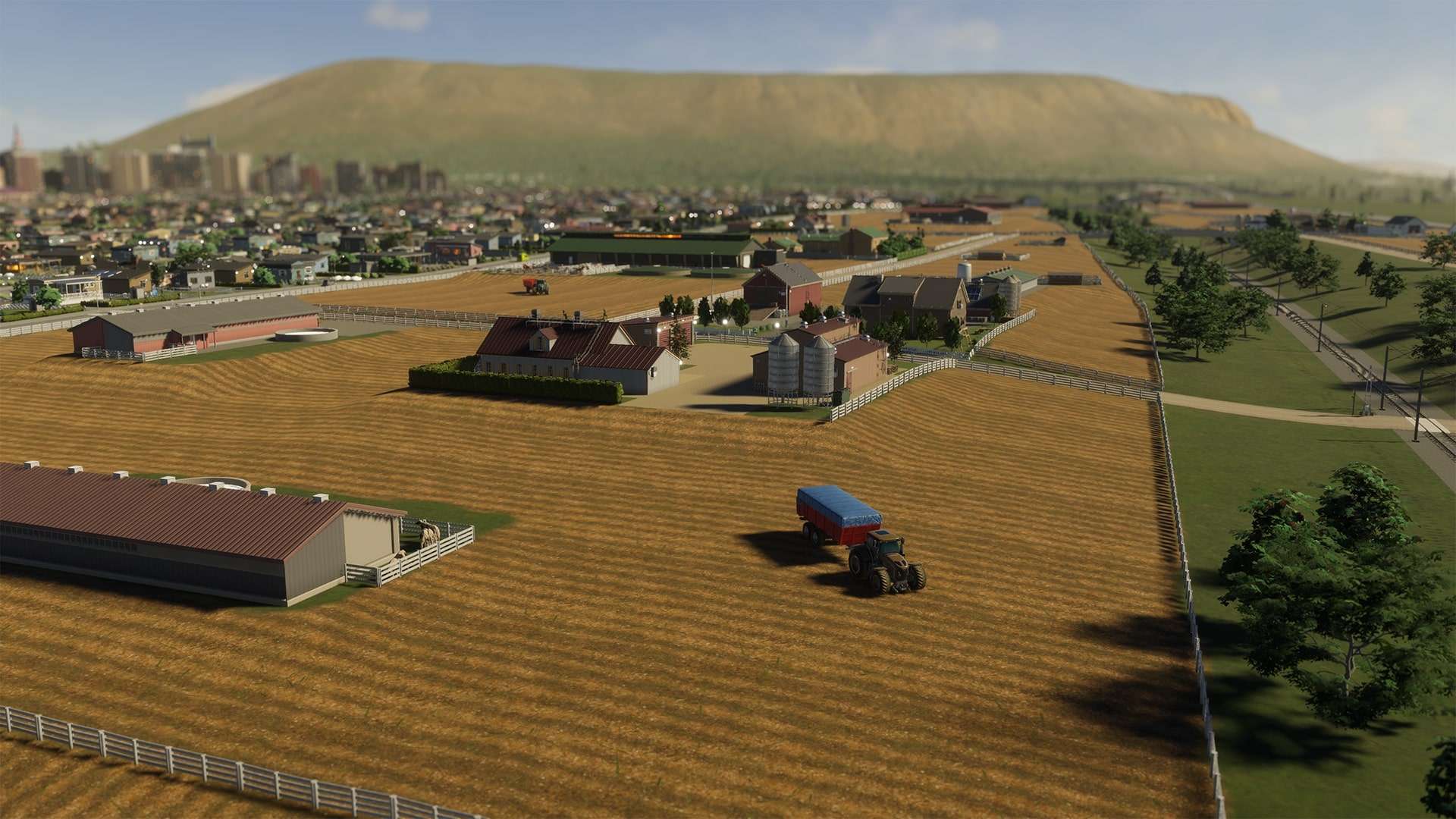
Natural Resources
Maps have five different types of natural resources:
- Groundwater
- Fertile Land
- Forest
- Ore
- Oil
Natural resource distribution can be seen on the map by using the natural resource overlay.
Each resource is assigned a color. Forests are green, fertile land is yellow, oil is black, and ores are blue. The darker the shade of color, the better that piece of land is for extracting the associated resource. Statistics about natural resource availability and use can also be seen from this overlay.
Natural resource buildings can change not only the tax revenue and industrial supply chain of your city, but also the entire look and feeling of specialized areas. Exploitation of natural resources and specialized industry is necessary if you wish to conduct more of the resource supply chain within your city.
Exploitation
Grain Farming specialized industry zone

Fertile Land, Forest, Ore and Oil resources can be exploited by creating a Specialized Industry zone over them. Specialized industry lengthens the supply chain of goods in your city, which may be desirable if you wish to create more jobs, re-balance imports and exports, or otherwise take more control of the flow of freight through your city.
A specialized zone does not necessarily need to be created over a supply of that natural resource. If created over an area without the associated resource, the zone will be populated with only processing facilities and require the raw materials to be brought in from elsewhere. Industrial specializations will yield more tax income from the specialized zones if there are relevant natural resources present.
Groundwater
The groundwater deposits are accessible through the Groundwater Pumping Station. The groundwater deposits have a replenishment rate which refills their water level over time. However, unlike surface water areas, groundwater deposits can temporarily dry up if their usage is higher than their replenishment rate. The deposits will eventually fill back up if water pumping is halted or reduced by lowering the budget and thereby the building’s efficiency.
Groundwater usage is an equally viable way to bring water to the city and a great alternative to Water Pumping Stations when a map features a limited amount of surface water areas. Additionally, Geothermal Power Plants require groundwater deposits to produce electricity in the city.
Groundwater deposits are very susceptible to ground pollution. If the deposit comes into contact with ground pollution, it starts to become contaminated, leading to dirty water being pumped into the water system. Once the ground pollution is removed, the pollution in the groundwater deposit also decreases until it is entirely clean once again. The rate at which the deposit is decontaminated is the same as its water replenishment rate.
Depletion of Resources
Groundwater, Fertile Land and Forest resources are renewable resources. They have a constant rate at which they renew, visible in the natural resources info view. Fertile Land and Forest resources are depleted by ground pollution. Forest resources and also depleted by forest fires.
Ore and Oil resources are non-renewable and are eventually depleted.





Be the first to comment